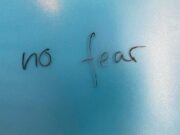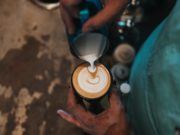I talk about being a kid often because life and believing seemed so much simpler then. When I was a kid I had a friend. His name was Ho-Do. He was my best friend, and to me he was as real as any other person. However, for the rest of the world, they could not see him, hear him, or touch him.

Ho-Do was my invisible best friend. I would tell Ho-Do everything. He always followed me around, and many times at dinner we had to add an extra chair, plate, and even food for this guest that no one else could communicate with except for me. He was so real to me, and indeed an enjoyable playmate. As I grew, Ho-Do started to go away. Sometimes he would come back, and then one day he was just gone.
I relate back to Ho-Do in my life, because the relationship that I have with God often feels like the one that I shared with Ho-Do. God seems so real at times, while other times I find myself drowning in a pool of doubt. Not too long ago I read Phillip Yancey’s book, Reaching for the Invisible God. In the book’s pages I discover Yancey, just like all of us, often finds himself also being smacked by the waves of disbelief. He wrote a line that I have highlighted and underlined several times:
“God’s invisibility guarantees I will experience times of doubt.”
Doubt is a natural part of the Christian faith. However, we should not foster our doubt or let it be the driving force in our lives (Hebrews 12:1-4). We must allow doubt to be the skeleton that the flesh of faith grows on. By that I mean that we use our doubts to propel us to deeper study and understanding of God.
If we have a question, then we must seek the answer in God’s Word.
If we are anxious, then we must find comfort in the gospel of Christ.
If we are at a loss of words for God, we must trust the Holy Spirit to interact with us.
God’s invisibility makes believing hard, but if we have child-like faith we will begin to see that God is much more apparent than we may first believe. This was the main theme of my sermon on John 4:43-54 this week.
How do you wrestle with your doubts?







![Where is God when Discouragement Sets In? [Sermon]](https://joshweidmann.com/wp-content/uploads/2022/06/paola-chaaya-eAkjzXCU0p0-unsplash-180x135.jpg)

![How to Help Kids with Anxiety [video]](https://joshweidmann.com/wp-content/uploads/2020/07/mladen-borisov-RzbUUaP2JXY-unsplash-180x135.jpg)



